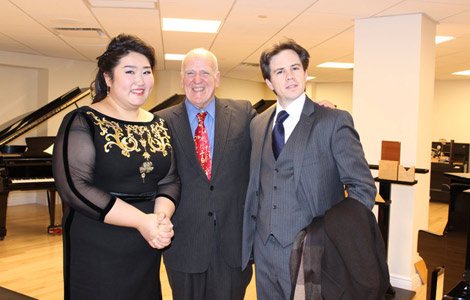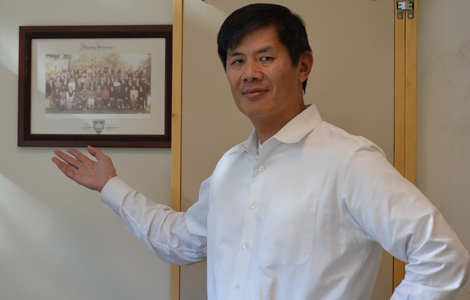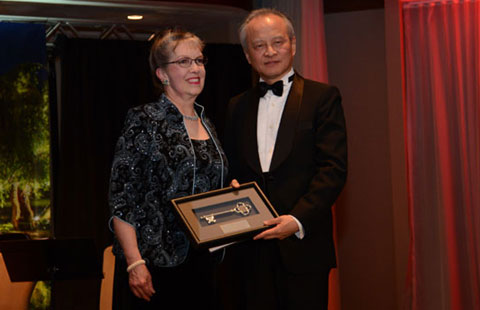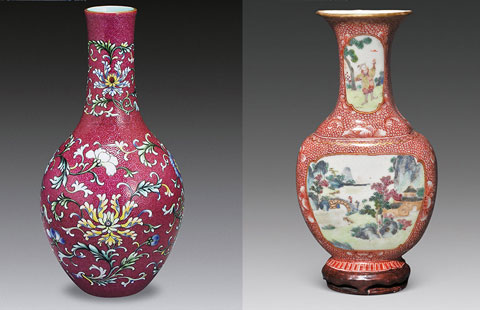And the rush is on: gates open for new round of Green Cards
Updated: 2014-10-01 06:17
By Chris Davis(China Daily USA)
|
||||||||
The experts' predictions were right and now new EB-5 immigration visa numbers are available as of today, Oct 1.
The Immigration Investor Program Office in Washington has warned that processing times may continue to increase as the operation hires and trains staff to meet the "drastically increased" number of applications for the so-called green-card-for-money program.
Slow processing times may relieve some of the demand for EB-5s, but it doesn't seem likely. After the first three quarters of Fiscal Year 2014, the US Customs and Immigration Service had 10,375 petitions pending, up nearly 46 percent from the 7,131 petitions pending at the end of the 2013 Fiscal Year.
The immigration department is advising that despite the increase in filed applications and the slow-up in processing, EB-5 investors should continue to apply as soon as possible, as these complications in no way affect the adjudication of the applications.
Furthermore, if the number of applications from Chinese mainland investors goes over the limit, the State Department will create a waiting list based on the date the applications are filed.
"Accordingly, EB-5 investors who have filed their I-526 Petitions prior to other EB-5 investors will be closer to the front of the EB-5 immigration visa line," the announcement said.
The EB-5 immigrant investor visa program was established as part of the Immigration Act of 1990. Every year, 10,000 EB-5 Green Cards are made available. Unlike the H-2B nonimmigrant visa classification and most EB-2 and EB-3 immigrant classifications where demand far exceeds supply, there is not a quota waiting list for EB-5s.
Foreigners have to meet three basic requirements to qualify for the EB-5 green card program:
They must establish a US business or invest in an existing business that was created or restructured after Nov 19, 1990. The investment can be in the form of capital such as cash, gift or loan, or equipment, inventory or property and must increase the capital of the business by 40 percent or increase the employment base by adding at least 10 jobs;
They must have invested $1 million in the business (or $500,000 if it is in a target employment area, that is, an area that has experienced an unemployment rate of at least 150 percent of the national average or is a rural area);
And the business must provide full-time, self-sustaining jobs for at least 10 US workers.
The US Visa Service suggests ideal EB-5 prospects include retirees, entrepreneurs, investors, doctors who have not completely passed the US Medical Licensing Examination, F-1 students who want to start a business and parents who seek a US education for their children but do not want to be actively involved in managing a business.
The entire soup-to-nuts process usually takes four to five years, the Visa Service says, often depending on where the application is filed. Applicants need to do their due-diligence homework, line up their funding and document it and, of course, make the investment. Adjudication of the application alone can take from six months to a year.
Once the application has been approved, the adjustment of immigration status to conditional permanent residence can take up to an additional two years and then begins a wait period of 21 to 24 months to verify that the full investment has been made and the required ten jobs have indeed been created.
The Visa Service then helps the applicant get the "conditional" status removed and a full Green Card for indefinite permanent residence and permission to work in the US.
In the latest round of EB-5 applications, Chinese nationals accounted for 80 percent.
A Chinese woman who recently immigrated to the US and asked to be identified only as Li told Boston Magazine that she and her husband had first considered living in Los Angeles but when they visited it they found it to be too much like home, already full of Chinese people and "the school is like a Chinese school — many, many students". So the family settled in Boston.
She and her husband got their Green Cards through EB-5 by investing in a Goodyear factory in Ohio, a site neither has ever visited.
Contact the writer at chrisdavis@chinadailyusa.com.

 Music at her fingers
Music at her fingers
 Across America Over the Week (Jan 16 - Jan 22)
Across America Over the Week (Jan 16 - Jan 22)
 Spend Chinese New Year in style
Spend Chinese New Year in style
 Ili river valley becomes a popular destination for swans
Ili river valley becomes a popular destination for swans
 Philip Ma: from scientist to businessman
Philip Ma: from scientist to businessman
 Birmingham's Spotlight on China dinner
Birmingham's Spotlight on China dinner
 How to distinguish doucai, wucai, Famille-rose and enamel porcelain
How to distinguish doucai, wucai, Famille-rose and enamel porcelain
 Xinjiang lake in bumper fishing season
Xinjiang lake in bumper fishing season
Most Viewed
Editor's Picks

|

|

|

|

|

|
Today's Top News
Houston's SW Chinatown
China to focus on reforms, opening of capital market
Slowdown brings new risks to banks
Trade group calls for BIT
Market status for China is 'political' issue
Birmingham's Spotlight on China dinner
Bank takes renminbi-clearing seriously
Traditional Garb
US Weekly

|

|







